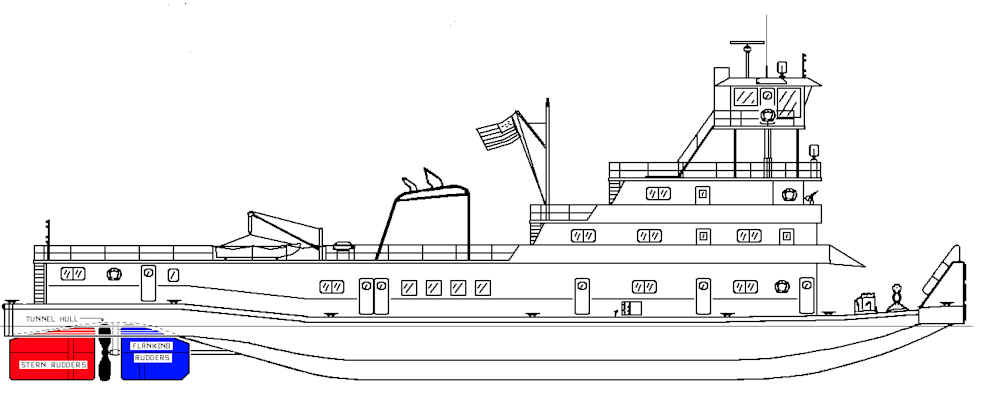|
JcDent posted:A tank related question: autoloaders! Who does Ivan do it, and everyone else doesn't? Is it a part or some soviet Ivan-economy thing, where less Ivan per tank means more Ivans for tanks? Or is it to make the tank even smaller and cramped? You need to look at tank design at a strategic level to understand the reason a country might choose an autoloader over an eighteen year old with a strong right arm. Tanks are designed to operate within, and complement doctrine. Tank destroyer doctrine results in tank destroyers. ( The Soviets designed tanks with small turrets. They made this choice because it presents a smaller profile, making it harder to hit, because it's lighter, and because long-term operational endurance wasn't a prime concern of their doctrine. Conversely, their tanks were extremely cramped inside, by western standards. A unit could expect extremely heavy contact as part of a spearhead, but then would be able to rest while mop-up operations were under way, or be replaced by another unit. NATO tanks, by comparison, were designed with the knowledge that they would be on the battlefield and in essentially constant contact from the moment the first shots were fired until In combat, a loader is just an autoloader made of meat, but OUT of combat, an additional crew member is a huge advantage. Another crew member available for daily maintenance and repair, another set of hands for the continual job of cleaning the armament and optics. Another set of hands for loading ammunition, fuel, and other supplies. Additionally, it provides an excellent place for a junior tank crewman to learn the ropes, before being placed in a position with more responsibility. All of this helps a tank maintain its ability to fight over a much longer period of time, something that was of concern to NATO planners, since replacements and reinforcements would probably be minimal after the commencement of hostilities. It could also be argued that Soviet tank crews would have been under even more stress in an actual combat situation due to the way their tanks were crewed; the tank commander would probably be senior enlisted or a NCO, with significant formal training, while his driver and gunner would likely be conscripts with some limited operational training, but probably very little training or ability to maintain their fighting vehicle over the long term. This is of course mitigated by the way the Soviets intended to fight, but could have become a concern in a protracted engagement. Luckily, we never found out which would have worked better in practice.
|
|
|
|

|
| # ? May 27, 2024 14:44 |
|
Libluini posted:The German wiki is ALWAYS better. For some reason the English version is often infested with super-wrong bullshit. The rule of thumb here is: The more science you need, the more German you need. 
|
|
|
|
MrYenko posted:Additionally, it provides an excellent place for a junior tank crewman to learn the ropes, before being placed in a position with more responsibility. Was this done in practice?
|
|
|
|
It bears remembering how many tanks each side had. Soviets prepared themselves for WW2 vol. 2 fought across a vast front, and therefore they had something like 50k+ tanks. To visualize this, if the front extentended from the Arctic Sea to the Black Sea like in Barbarossa then if all the Red Army tanks had been arranged into a single line with even spaces, there would have been a tank every 50 meters or a tank company every 500 meters. Removing the loaders from 50 thousand tanks meant freeing a corps' worth of conscripts for other tasks, not to mention other cumulative savings from having lighter tanks.
|
|
|
Groda posted:Was this done in practice? Yes. You move through the positions in the armored vehicle as you advance in rank and experience. Nobody jumps right from vehicle school to being a tank gunner. (at least in the modern era)
|
|
|
|
|
But what about the post-modern era?
|
|
|
|
MassivelyBuckNegro posted:Yes. You move through the positions in the armored vehicle as you advance in rank and experience. Nobody jumps right from vehicle school to being a tank gunner. (at least in the modern era) No, some conscripts get to be tank gunners right from vehicle school.
|
|
|
|
yes US TO&E even specify this http://fas.org/man/dod-101/army/unit/toe/17377F000.htm
|
|
|
|
|
Gorson posted:Here's something I've always been curious about : In modern warfare (say, 1900 to the present) what percentage of casualties can generally be attributed to non-combat accidents? For example, how many people died because they weren't paying attention on the airfield and got killed by a propeller? How many mechanics died when the truck then were working on crushed them? How many engineers were blown up laying their own mines? That sort of thing. To put my question another way, what would a modern military commander consider (or expect) to be an "acceptable" percentage of non-combat casualties? I don't know about everyone, but Krivosheev has a pretty good breakdown of Soviet WWII casualties, including noncombat deaths, disease, and frostbite. There are no totals for the whole war, but he has it broken down by front and year. The figure is generally between 0.5 and 2%, sometimes as low as 0.3% or as high as 3%. The figure is also broken down by officers, NCOs, and soldiers. NCOs die outside of combat about twice as often as officers, soldiers die 10 times as often.
|
|
|
|
I don't know about the Soviets, but most noncombat deaths in a 21st-century military are car crashes.
|
|
|
|
Slim Jim Pickens posted:I don't know about the Soviets, but most noncombat deaths in a 21st-century military are car crashes. It was probably something automotive for the Red Army too, Krivosheev breaks it down by armed forces and motorized units have a pretty large share of noncombat casualties. Either that or drinking the antifreeze. The safest place to be out of combat was the fortification regions. I can't imagine it was particularly comfortable, but at least you got to sleep indoors and didn't have to go too far for anything.
|
|
|
|
How much Soviet doctrine was built around the idea of launching a big ground invasion of Western Europe? I know NATO spent the Cold War planning for that possibility, but I've also read that the Soviets were more worried about a NATO surprise attack than the reverse.
|
|
|
|
Probably best to start counting from the invention of Penicillin (1929) than 1900.
|
|
|
Chamale posted:How much Soviet doctrine was built around the idea of launching a big ground invasion of Western Europe? I know NATO spent the Cold War planning for that possibility, but I've also read that the Soviets were more worried about a NATO surprise attack than the reverse. I do know that their doctrine for fighting in Western Europe was a big source of issues when they ran into Afghanistan in the 1980s, and I recommend The Bear Went Over the Mountain for that subject. Soviet doctrine at the time was to dump massive amounts of artillery and airstrikes on enemy positions (including plenty of smoke), then send in tanks and infantry (loaded into personnel carriers like BMPs) to mop up the rest; the basic idea was to open an attack with a massive offense that would remove the ability of the enemy to adequately resist. Soviet soldiers actually weren't expected to fight more than 200 meters from their vehicles, and so they went out with only three or four magazines and a few stripper clips. That translates to a single belt pouch of ammo. Compare that to modern soldiers, who go out with 6 to 9 magazines on average and try to carry as much ammo as they can stand. Unfortunately, things didn't quite work out that way in Afghanistan. The mountainous terrain and cave systems made it much more difficult to just drop explosives everywhere and expect your IFVs to calmly drive up and disgorge riflemen who would stay within sight of their vehicles and heading back when they ran out of ammo. As you can seen in that picture, they went out with sapogi jackboots that are completely unsuitable for climbing mountains and really aren't that good for anything except looking snappy back at the base or needing to pull on boots really fast when you wake up. The belt ammo pouches aren't the most high-speed low-drag setup, while the Mujahideen had Chinese chest rigs and locally made copies that are a lot more practical (take a look at any modern soldier and look at how much is carried on their chest instead of the waist). Their body armor was a bit better in layout, but weighed up to 10 kilos with plates. Their sleeping bags were heavy, non-waterproof cotton. The rucksacks like the veshmeshok were 1950s or earlier technology, again not meant for extended use away from vehicles. Field rations were nutritionally deficient and built for group feeding and had shiny cans that were an easy giveaway when a unit decided not to dig a garbage pit in the rocky terrain. Simply put, it was a war that needed light infantry and the Soviets went in with conscripts who were supposed to deliver massed firepower from vehicles after supporting fire from afar. So they began desperately trying to figure out any way to fix the problems. Units privately purchased kimri, a catch-all term for tennis shoes that were far more practical than jackboots in the mountains. The most recognizable of these are Moskva copies of the Adidas Gazelles (I believe they were licensed for the 1980 Olympics to be produced in Moscow, but unlicensed production continued afterward). The VDV airborne troops cannibalized load-bearing gear to create chest rigs or just outright looted Chicom rigs from bodies, until the Soviets began producing the Lifchik for them.
|
|
|
|
|
So playing some CK with some folks, there was a battle of about 15,000 Muslems and 12,000 Crusaders, the enemy players joined against my holy war for some African provinces; but we won that battle when I landed about 5,000 soldiers to reinforce the battle. Historically how does that work? Do they just disembark with row boats and slowly form up on the beaches or in some port town before joining the battle? How did "amphibious" operations work back then?
|
|
|
|
Raenir Salazar posted:So playing some CK with some folks, there was a battle of about 15,000 Muslems and 12,000 Crusaders, the enemy players joined against my holy war for some African provinces; but we won that battle when I landed about 5,000 soldiers to reinforce the battle. I suppose Caesar's invasion of Britain is somewhat relevant. The first attempt was to land at Dover, but the Britons were waiting for them on the cliffs. The fleet then sailed a few miles aside but the British forces followed them and Romans had to fight waist deep in water before the barbarians relented.
|
|
|
|
Raenir Salazar posted:So playing some CK with some folks, there was a battle of about 15,000 Muslems and 12,000 Crusaders, the enemy players joined against my holy war for some African provinces; but we won that battle when I landed about 5,000 soldiers to reinforce the battle. CK battle are weird and far too lethal to reflect reality. Every tick of game time is a day, right? Medieval warfare doesn't work like that. Real life crusaders did receive reinforcements by sea, but those were guys sailing into port and then marching out to the main army. If the town was under siege but not blockaded, it would be pretty common for extra troops to stream into town and head for the garrison. Otherwise, they were usually a couple days of march from possible fighting. I can't think of a medieval amphibious landing, but there are Classical era examples. Caesar's invasion of Britain began with a contested landing. The Romans had lots of ships with catapults and other hardware, that could drive off the Britons and prevent them from rushing the boats.
|
|
|
|
Slim Jim Pickens posted:I can't think of a medieval amphibious landing, but there are Classical era examples.
|
|
|
|
How often were amphibious landings contested in the pre-modern era, actually? I imagine that trying to get an army on land to react in sufficient force to counter an army transported by ship can be pretty tricky.
|
|
|
|
Well, with the Vikings, they'd just sail up, park their ships on the beach or riverside, and do their smash n' grab before the locals could get their poo poo together. In the old days, people didn't have a few million soldiers guarding all the landing zones 24-7.
sullat fucked around with this message at 02:25 on Aug 24, 2015 |
|
|
|
Slim Jim Pickens posted:CK battle are weird and far too lethal to reflect reality. Every tick of game time is a day, right? Medieval warfare doesn't work like that. There is William the Conqueror's assault from Normandy to England in 1066, but aside from seeing the Bayeux Tapestry once a few years back I'm not sure of the specifics on how he pulled it off.
|
|
|
|
Acebuckeye13 posted:There is William the Conqueror's assault from Normandy to England in 1066, but aside from seeing the Bayeux Tapestry once a few years back I'm not sure of the specifics on how he pulled it off. Landed unopposed. Harold Godwinson's army was on the other side of the country fighting Harold Hardrada, at Stamford Bridge.
|
|
|
|
thatbastardken posted:Landed unopposed. Harold Godwinson's army was on the other side of the country fighting Harold Hardrada, at Stamford Bridge. That'll do it! 
|
|
|
|
Acebuckeye13 posted:There is William the Conqueror's assault from Normandy to England in 1066, but aside from seeing the Bayeux Tapestry once a few years back I'm not sure of the specifics on how he pulled it off. E,FB. That'll learn me for looking up which Haro/ald beat up which.
|
|
|
|
For Paraguay, the War of the Triple Alliance began as farce, ended as tragedy, and had perhaps one moment of (kind of) triumph. I'll try to get to the tragedy later, but here is some more farce. Last week I posted about the Battle of Yatai (August 17, 1865), where the Paraguayans were defeated due to among other things lack of logistical support, splitting their forces for no reason whatsoever, poor choice of defensive ground (at the base of an undefended hill with their backs to the river), the outnumbered force being denied (available) reinforcements, but ultimately because of unclear strategic aims. For the earlier Battle of Riachuelo (June 11, 1865), the strategic aims were much clearer, and yet much more unrealistic.  Problem: Paraguay is landlocked. The Paraná river is their only way to the sea, but has been blockaded. The small Brazilian squadron just south of Corrientes prevented Paraguay from moving men and supplies downstream. If they could clear the river, Buenos Aires was open and they could possibly break the blockade. The plan:  Nine ships in the Paraguayan fleet would leave Humaita in the evening and sail downstream, six of them towing "chatas", barges carrying men and one gun, so that the fleet would pass the Brazilians at before dawn. By this time, Paraguayan artillery and infantry have marched separately to the heights overlooking the Brazilians. Passing the Brazilians, the Paraguayan fleet would turn around and steam back upriver after passing Santa Catalina point. At this point they would release the chatas, who would later be able to fire upon the Brazilians. The ships would continue upstream, each ship would select one enemy ship, fire a broadside, and then storm it. This was thought to be achievable because a) Paraguayans were fearless warriors while the enemies were pussies, and b) because the Brazilians slept on shore, and it was hoped that the ships could be captured and/or destroyed before they could fight their way back on board. (Why did they want to sail past the enemies, then turn around and engage them then? Not really sure--it's been suggested that these steamers were more maneuverable when going upriver.) There is a lot of confusion as to who came up with the plan. Some sources say dictator Francisco Solano Lopez came up with it, some say he asked his officers to come up with something, another says the (English) engineer of his flagship suggested it. Whoever came up with it, Lopez had to sign off on it—this is the only way things got done. There were nine Brazilian ships, but these had much more combined size and firepower than the nine Paraguayan ships. The Brazilian flagship Amazonas (1800 tons, 60 guns) was much bigger than the Paraguayan flagship Paraguary (730 tons, 44 guns). The Brazilians ships were all purpose built as warships, but the Paraguayan ships were converted merchant ships and (aside from Tacuary) had boilers above the waterline. The Brazilians ships were all wooden, as were the Paraguayans—at least the Tacuary was armor plated.   The plan relied on two things: surprise and wishful thinking. Though equal in number, the Paraguayan fleet could never challenge the Brazilian fleet in a battle, so this needed to be taken care of through sneakery, before the Brazilians were ready. The wishful thinking was thinking that a plan that relied on so many factors outside of their control (that the river would allow them to approach the enemy in order to storm the ships, that the enemy would not be on alert, that the enemy on shore would be slow to return to the ships) could have a decent chance of working. June 10: d day minus one was spent loading ammo and preparing plans. 500 men were selected to be on the 9 Paraguayan river steamers, armed, 6 of them towing chatas. Chatas were long low canoes, carrying 20-30 soldiers and a 68-pound gun in the center (Thompson say an 8-inch gun). These were double prowed, stood one foot out of water, could only be towed, could not navigate itself. The only truly smart thing the Paraguayans did was secretly march 1000 infantry and 22 cannons to the edge of some cliffs just downriver of the Brazilian fleet, were they remained hidden in the vegetation, waiting the upcoming battle. Now the preparations were done. Thomson, War in Paraguay posted:Lopez went, on horseback, and addressed them. They were all in a great state of enthusiasm, and promised to bring back the Brazilian fleet. Lopez told them to bring prisoners, and they answered, ‘What do we want prisoners for? We will kill them all!’ ‘No’, said Lopez, ‘bring some prisoners’. Coming up in part two: plans don't always work out. I hope to get to the actual battle in a few days.
|
|
|
|
Holy poo poo those maps suck, I'm guessing that isn't your fault though.
|
|
|
|
Klaus88 posted:Holy poo poo those maps suck, I'm guessing that isn't your fault though. It is totally my fault since I made them.
|
|
|
|
Holy poo poo that plan sucks!
|
|
|
|
dokmo posted:
I can actually answer this one! Maneuvering a rudder and screw ship is dependent on water flow over the rudder- the rudder generates high and low pressure zones on either side, much like an aircraft's wing, forming a flow of water that pushes the ship. When you have a swift following current every knot of current directly subtracts a knot of water flow from your rudder - if you're making turns for 15 knots in a 5 knot following current you're only going to get 10 knots of effective turning force, plus the boat itself will be making 20 knots over the ground. So you have the unfavorable handling characteristics of being both fast and sluggish in steering at the same time. The exact opposite is true when going upstream- the current reduces your speed but increases your turning force and its much, much easier to deal with. Boats that are actually designed to operate in rivers- like Mississippi pushboats, will usually have an extra, smaller set of rudders forward of the propeller called flanking rudders. The current on the Mississippi is fast enough that these boats spend most of their time "backing down" on a downstream run- that is, running their engines astern at say, 5 knots to reduce a 15 knot current to a manageable 10 and steering on the flanking rudders with an effective 20 knots of turning force. 
Polikarpov fucked around with this message at 06:30 on Aug 24, 2015 |
|
|
|
Polikarpov posted:I can actually answer this one! Maneuvering a rudder and screw ship is dependent on water flow over the rudder- the rudder generates high and low pressure zones on either side, much like an aircraft's wing, forming a flow of water that pushes the ship.
|
|
|
|
I know or I think I know that the US tried using rockets as air to air weapons a few times in the big one to mostly poor effect since they found most success against USAAF/RAF heavy level bombers, a type of plane that the Axis powers were sorely lacking in. Was there any attempt to upgrade them with proximity fuses since they'd probably be more commonly used in combat against more nimble craft?
|
|
|
|
Ensign Expendable posted:It was probably something automotive for the Red Army too, Krivosheev breaks it down by armed forces and motorized units have a pretty large share of noncombat casualties. Either that or drinking the antifreeze. My favorite soviet "drinking antifreeze" story revolves around the Tu-22 'Blinder', which had the troop nickname of "booze carrier". It carried 450 litres of pure grain alcohol for its hydraulics and de-icing system, and apparently members of the ground crew had no qualms about drinking it!
|
|
|
|
Tias posted:My favorite soviet "drinking antifreeze" story revolves around the Tu-22 'Blinder', which had the troop nickname of "booze carrier". It carried 450 litres of pure grain alcohol for its hydraulics and de-icing system, and apparently members of the ground crew had no qualms about drinking it! I have heard this exact story but for a different plane. The foxbat I think? It was apparently nicknamed the flying restaurant as a result. You'd think they'd find a different hydraulic fluid.
|
|
|
|
JcDent posted:Holy poo poo that plan sucks! I just love plans that boil down to "...and then the enemy gives up because they are bad at war!" They never loving work, but time and time again people come up with them.
|
|
|
Splode posted:I have heard this exact story but for a different plane. The foxbat I think? It was apparently nicknamed the flying restaurant as a result. That was the MiG-21 Fishbed. I believe the reason they used alcohol is because it was cheap and easy to get.
|
|
|
|
|
chitoryu12 posted:That was the MiG-21 Fishbed. I believe the reason they used alcohol is because it was cheap and easy to get. Not cheap or easy enough given that the ground crews were just chugging it out of the plane's assholes.
|
|
|
|
ArchangeI posted:I just love plans that boil down to "...and then the enemy gives up because they are bad at war!" They never loving work, but time and time again people come up with them. It's not like it has never happened. Lots of wars have been won or lost by one side being hideously unmotivated or mid-high level leadership being lacking. See the Nazis attacking through the Ardennes, and the French leadership just collapsing. Or the Sui waffling around in Korea until the dynasty collapsed on itself. So it helps to have a decent plan. For instance, the US thunder runs during Gulf War 2 were meticulously planned out and accounted for more opposition than actually met. But there, the tactical plan worked out, but the strategic plan completely failed: they didn't account for people to resist or people settling grudges or people positioning themselves for the post-Saddam civil war.
|
|
|
|
FAUXTON posted:Not cheap or easy enough given that the ground crews were just chugging it out of the plane's assholes. Grain alcohol is one of the best solvents in existence, and 20th century distillation techniques make it so cheap that governments must restrict it so people can't go on life-destroying benders for five dollars. When you're using hundreds of litres of essentially 196-proof vodka as a solvent, someone is sure to try and drink some of it.
|
|
|
|
Chamale posted:Grain alcohol is one of the best solvents in existence, and 20th century distillation techniques make it so cheap that governments must restrict it so people can't go on life-destroying benders for five dollars. When you're using hundreds of litres of essentially 196-proof vodka as a solvent, someone is sure to try and drink some of it. When the ordnance board started spiking alcohol-based fuels with poisonous chemicals, American submarine crews just jerry-rigged filtration and distillation systems so they could extract booze from their torpedoes. A lesson for the ages.
|
|
|
|

|
| # ? May 27, 2024 14:44 |
|
Slim Jim Pickens posted:When the ordnance board started spiking alcohol-based fuels with poisonous chemicals, American submarine crews just jerry-rigged filtration and distillation systems so they could extract booze from their torpedoes. Russian airplane technicians would have done the same, but faster, and with a T-55 engine thrown the mix somewhere there.
|
|
|
































